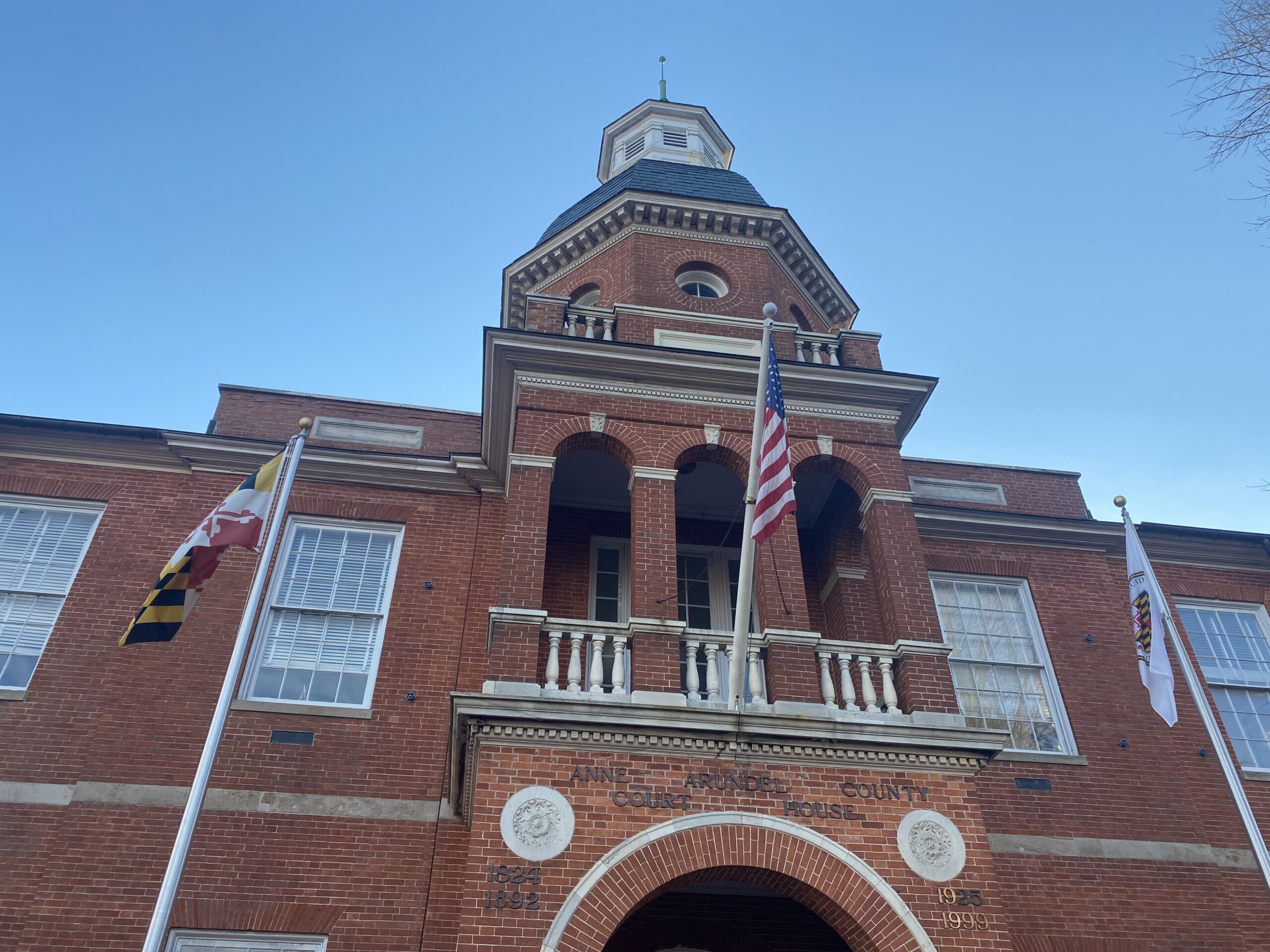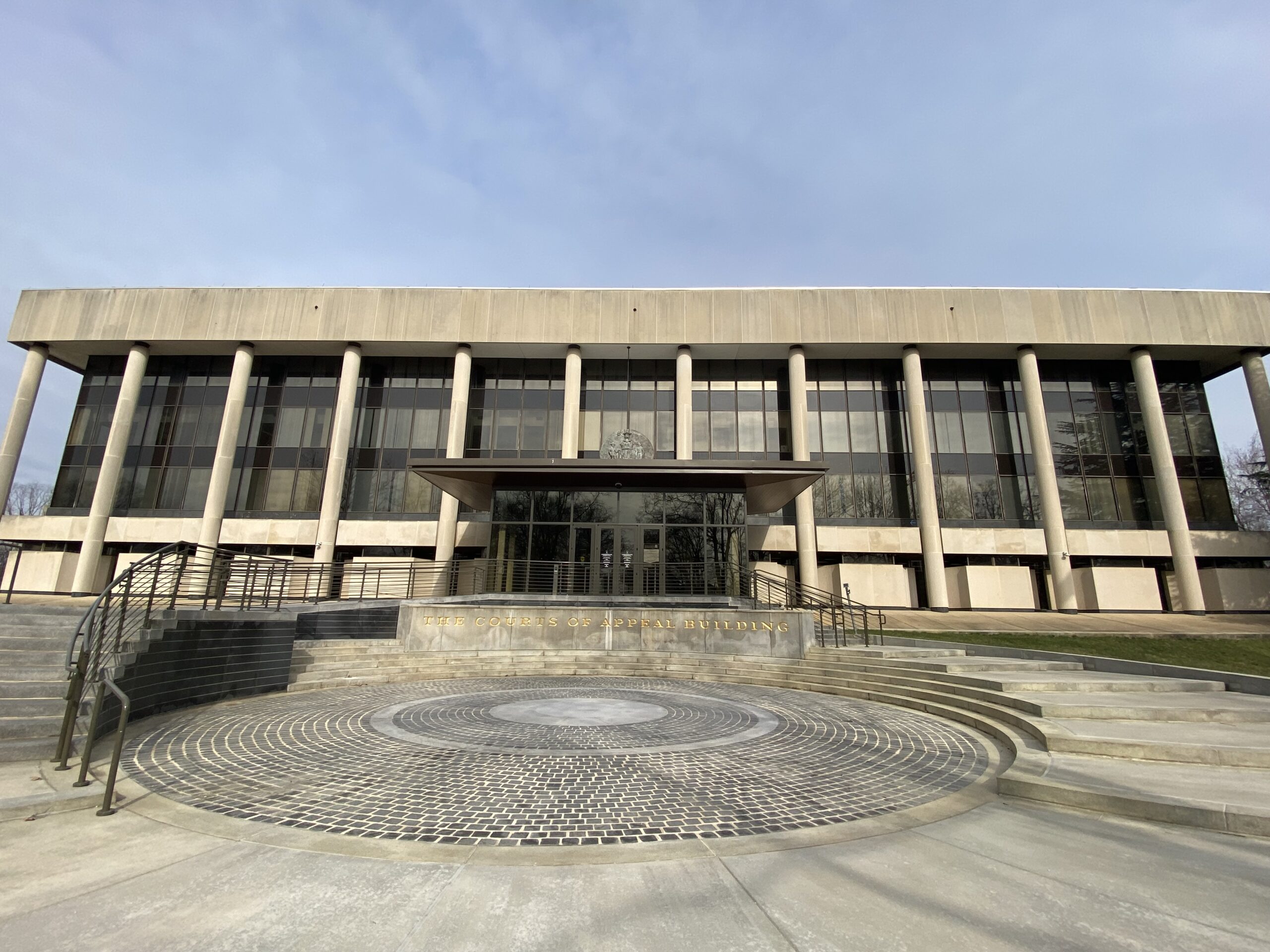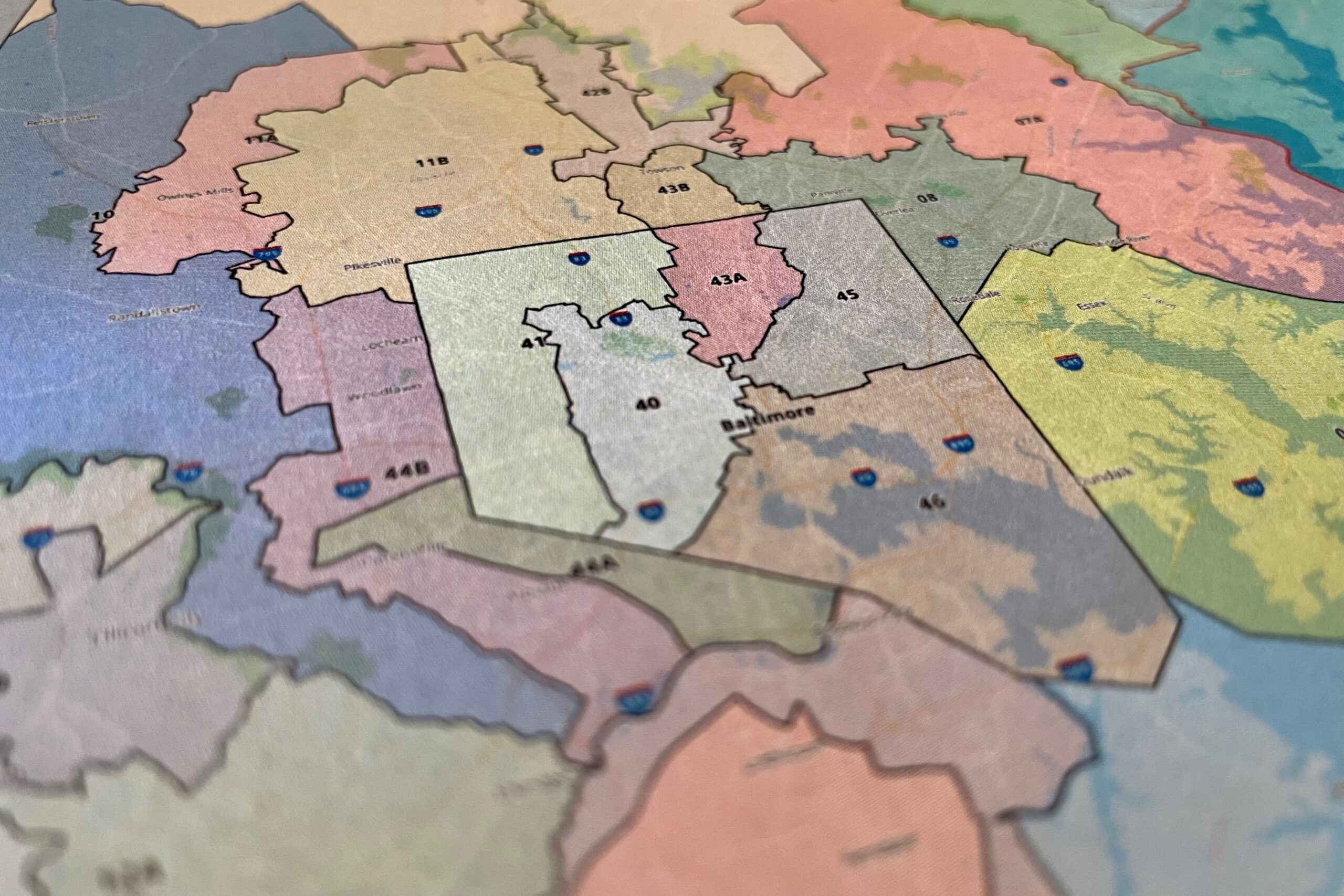Congressional Redistricting Trial Kicks Off With Analyst Testimony

Maryland’s new congressional districts are more compact than their immediate predecessors but are still significantly less compact than historic districts in the state, an analyst testified in a trial challenging the redistricting plan Tuesday.
The trial includes two challenges against the state’s redrawn congressional districts. One challenge, Szeliga v. Lamone, is brought by Republican voters from all eight of Maryland’s congressional districts. It contends that the redistricting plan lawmakers approved during a special session in December dilutes Republican votes and violates the Maryland Declaration of Rights’ requirement that elections be “free and frequent; and every citizen having the qualifications prescribed by the Constitution, ought to have the right of suffrage.”
Another lawsuit, brought by Del. Neil C. Parrott (R-Washington) and Judicial Watch, a national conservative group, also contends that the new congressional district map violates the state constitution because it disempowers Republican voters — and specifically that it violates Article III, Section 4 of the Maryland Constitution. That provision reads that “each legislative district shall consist of adjoining territory, be compact in form, and of substantially equal population. Due regard shall be given to natural boundaries and the boundaries of political subdivisions.” Historically, that provision has been interpreted to apply to state legislative and not congressional districts.
The cases were consolidated for trial in Anne Arundel County Circuit Court with Senior Judge Lynne A. Battaglia, a retired Maryland Court of Appeals judge, presiding.
Both lawsuits focus on state law rather than federal law after the U.S. Supreme Court opted not to weigh in on state-level partisan gerrymandering in Benisek v. Lamone, a case which centered around Maryland’s 6th Congressional District as it was drawn in 2011.
Sean Trende, a senior elections analyst for the political news outlet RealClearPolitics and witness for the plaintiffs in the Szeliga case, said he analyzed the compactness of both Maryland’s historical and current congressional districts. He said that, although the new map has “some improvement” on compactness compared to maps enacted in 2002 and 2011, the districts are still less compact than in historic maps.
Trende also said the new congressional map includes fewer county splits than maps enacted in 2002 and 2011, but more county splits than districts drawn in the 1970s, 1980s and 1990s. He said maps drawn before the 1970s include virtually no county splits but included vast population differences since they were drawn before the Baker v. Carr U.S. Supreme Court decision of 1962 that required congressional districts to be substantially equal in population.
“If compactness criteria mean anything, it has to mean that these maps are non-compact,” Trende said of the new maps.
Trende said Maryland’s unusual geography doesn’t preclude drawing compact districts, pointing to maps drawn shortly after the Baker v. Carr decision that scored high on several metrics for compactness.
The most consequential change in the state’s new congressional maps is in the 1st District, currently represented by Maryland’s lone congressional Republican, U.S. Rep. Andrew P. Harris. As drawn in 2011, that district was heavily Republican and included parts of northern Maryland with the Eastern Shore. But the new 1st District crosses the Chesapeake Bay to include parts of Anne Arundel County with the Eastern Shore and includes the southeastern portion of Harford County along the Bay.
Trende said Republican voters were removed from the 1st District with “almost surgical precision.” He added that, if only traditional redistricting criteria of population equality and contiguity were followed, the newly redrawn districts would be “highly improbable.”
“Under any definition of extreme gerrymandering, it fits the bill,” Trende said.
Robert Scott, deputy chief of litigation for the Maryland Attorney General, noted that Trende has worked as an expert witness in the defense of Republican-drawn redistricting plans in several states including Ohio and North Carolina. Scott also noted that Trende’s analysis of the new congressional map found that the plan outperforms the redistricting maps from 2011.
Scott pressed Trende on why he used voting patterns from the 2020 presidential election to ascertain the partisan lean of districts as opposed to using voting patterns from the 2014 and 2018 gubernatorial elections. Trende characterized those elections as “unusual” because of a strong, popular Republican candidate in Gov. Lawrence J. Hogan Jr.
The congressional redistricting trial is set to run until Friday.
A trial for petitions against the state’s legislative map is set to begin at 10 a.m. on March 23 at the Maryland Court of Appeals in Annapolis, according to a release from the Maryland Judiciary.
Special Magistrate Alan M. Wilner, a retired Court of Appeals judge, has indicated that he would submit his report to the Court of Appeals in early April in the challenge against the state’s new legislative maps.
On Tuesday the Maryland Court of Appeals delayed the state’s primary election, moving it from June 28 to July 19.




 Creative Commons Attribution
Creative Commons Attribution